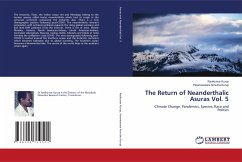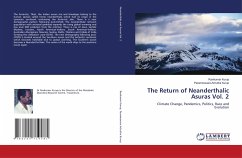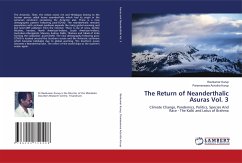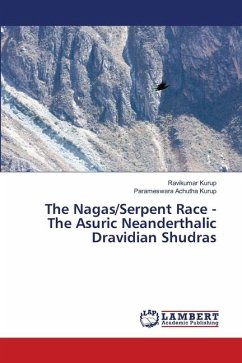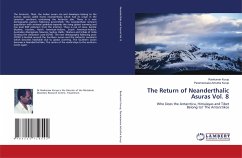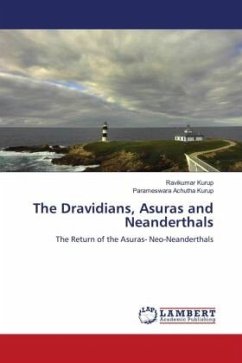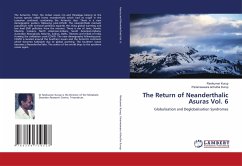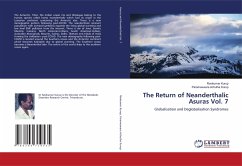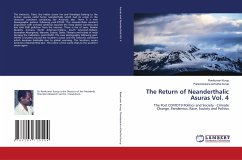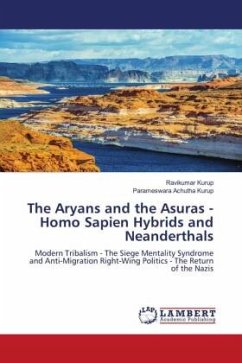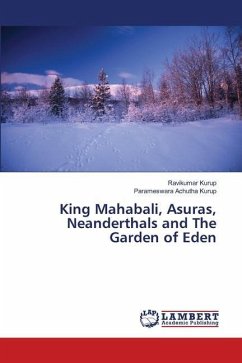
King Mahabali, Asuras, Neanderthals and The Garden of Eden
Versandkostenfrei!
Versandfertig in 6-10 Tagen
79,99 €
inkl. MwSt.

PAYBACK Punkte
40 °P sammeln!
The homo neanderthalis, the Dravidian elite and the Asuras may have a common origin in the Lemurian landmass. The homo neanderthalis arising out of the Lemurian landmass consisting of peninsular India, Antarctica and Australia would have been the forerunner of the asuric Dravidian Neanderthal group. The languages like Sanskrit and Akkadian have a Dravidian substrate. The Dravidian elite would have been synonymous with asuric Dravidian Neanderthal group. This suggests that the Vedas and Vedic civilization may have an Antarctic or Lemurian origin. The homo neanderthalis migrated from the superco...
The homo neanderthalis, the Dravidian elite and the Asuras may have a common origin in the Lemurian landmass. The homo neanderthalis arising out of the Lemurian landmass consisting of peninsular India, Antarctica and Australia would have been the forerunner of the asuric Dravidian Neanderthal group. The languages like Sanskrit and Akkadian have a Dravidian substrate. The Dravidian elite would have been synonymous with asuric Dravidian Neanderthal group. This suggests that the Vedas and Vedic civilization may have an Antarctic or Lemurian origin. The homo neanderthalis migrated from the supercontinent in the Southern ocean consisting of a South Indian landmass, Antarctica, Australia and South America owing to the breakup of the continent by volcanic eruptions in the Indonesian islands and tsunamis. The homo neanderthalis had an advanced culture and set up colonies in the Eurasian landmass creating the Indus valley civilization, Babylonian and Egyptian civilization. The kingdom of Asuras reached its glorious height as the Kingdom of Mahabali which extended throughout the India. Mahabali was a righteous king and care for the justice and wellness of his people.



